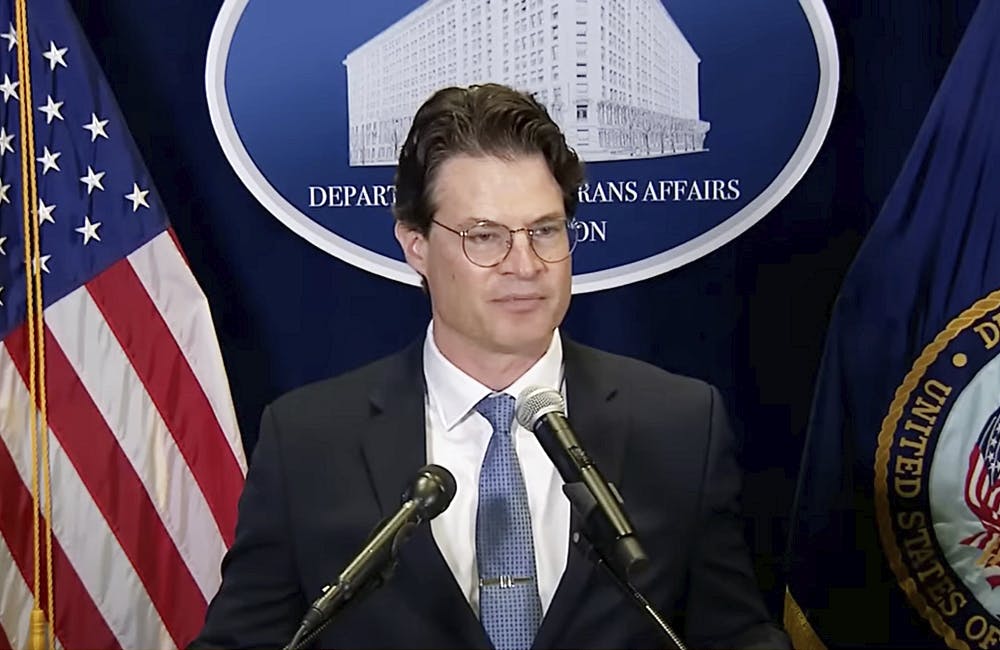Air Force Faces Culture Challenges to IT Modernization
Technology, processes, culture, training and funding hinder Air Force modernization efforts necessary to problem solve and stay ahead.

The U.S. Air Force faces cultural and training challenges to its digital engineering goals, said Brig. Gen. Steven J. Bleymaier, director of logistics, engineering and force protection for Air Mobility Command.
The Air Force had major wins with programs such as Sentinel that will replace the aging Minuteman III intercontinental ballistic missile, as well as in its efforts to re-wing the A-10 attack aircraft, but siloed organizational constructs, culture, training, outdated processes and funding are among some of the impediments standing in the way of IT modernization efforts.
“This is an enterprise problem. That’s how I see it,” Bleymaier said during a panel at the Air Force Association’s Air, Space and Cyber Conference Sep. 21.
Some of the challenges the Air Force comes up against include test processes that are still focused around physical testing as opposed to virtual and airworthiness that is still based on paper methods as well as lack of funding and hiring and training processes.
“To really achieve the full benefit and the value of digital engineering, it requires an enterprise ecosystem, but it’s currently funded in this bubble, so it has to compete with folks with small resources,” Bleymaier said. “So what you end up with is siloed capabilities that aren’t connected, and there are different levels of maturity and scale. So that’s a mismatch.”
Successes the Air Force has seen thus far are partly due to the 2018 Defense Department (DOD) efforts to transform its engineering practices into digital engineering. Recognizing the need to adapt and modernize, the Air Force created the Digital Transformation Office three years later with an aim to coordinate the service’s move to digital processes.
While the Air Force has witnessed progress in the digital engineering space, the panel acknowledged a lot of hard work that lies ahead and needs to happen across the enterprise and the lifecycle to ensure successful outcomes.
“Digital engineering technology is available today, but it’s not necessarily available to the military at large,” Bleymaier said. “Not only do we need to unlock digital engineering, but we need to unleash it. We need to unlock it and get it into the hands of the military. Otherwise, you’re not going to experience the power and the full value and its ability to accelerate acquisition across the lifecycle.”
The panel emphasized the importance of moving away from document-intensive linear processes to digital engineering that accelerate software-based acquisition, decrease lifecycle costs, increase readiness, reliability and availability, and sharpen the Air Force’s competitive edge.
“They [China] have 2030 goals for AI and ML and to be the dominant power, and they are nationally mobilized, and they are moving out toward achieving their goals and objectives,” Bleymaier said. “So that should give us a sense of urgency … but even knowing that about China, there still seems to not be the sense of urgency, there should be with accelerating and adopting digital engineering.”
This is a carousel with manually rotating slides. Use Next and Previous buttons to navigate or jump to a slide with the slide dots
-

DOI Must Modernize Energy to Win AI Race, Secretary Says
Doug Burgum links AI innovation to energy reform as DOI advances digital infrastructure and wildfire response under Trump’s tech agenda.
2m read -

FEHRM CTO Targets Two-Year Cloud Migration for Federal EHR
Lance Scott touts new EHR tech advancements, including cloud migration, expanded data exchange and AI integration to improve care delivery.
4m read -

How Integrated Analytics Can Break Federal Data Silos
The Coleridge Initiative is leading the charge to modernize government data management, breaking down bureaucratic barriers by providing secure data access, advanced analytics and cross-agency collaboration tools.
11m watch -

AI Boosts Customer Experience at Federal Contact Centers
Federal contact center leaders at DOL and VA are exploring AI's potential to drive efficiency and boost customer experience.
3m read -

Treasury Tackles Digital Payment Modernization
Executive order pushes shift from paper to digital payments as Treasury targets waste, fraud and inefficiency across federal agencies.
3m read -

OPM Navigates AI Governance Through People
OPM's Taka Ariga explores AI's role in an efficient federal workforce and operations, focusing on trust, data integrity and storytelling.
19m listen -

Mission Daybreak Tech Aims to Reduce Veteran Suicides
The VA’s Mission Daybreak grant program has developed innovative technologies to help VA providers reduce veteran suicides.
4m read -

Proposed DOGE Reforms Target Technology, Efficiency
The proposed Department of Government Efficiency eyes technology and strategic investments to make government more effective.
6m read -

New Year, New Administration: What's Next for VA in 2025
VA sets its sights on modernizing its EHR, advancing interoperability and adopting emerging tech amid the presidential transition.
4m read -

Library of Congress, NARA Modernize Records Management with Emerging Tech
Natalie Buda Smith and Jill Reilly dive into the challenges of preserving and providing access to digital-native materials.
19m listen -

VA Focuses on Continuous Improvement for 2026 EHR Rollout
VA plans to resume rollout of its EHR in FY 25, focusing recent feedback to drive continuous improvement amid the presidential transition.
4m read -

Trump's VA Secretary Nominee Aims to 'Streamline' Operations
Former Rep. Doug Collins said he wants to "streamline" VA operations. If confirmed, he'd inherit VA's massive digital transformation efforts.
4m read
















